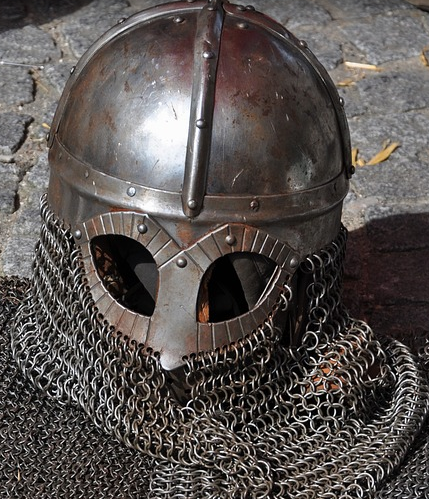French defence firm Nexter and German industrial giant KMW have recently partnered up for the development of several high-profile programs. The 2015 partnership finally arrives, after many years of negotiations. Together, the duo should provide Europe with state-of-the-art weaponry to uphold its defences in the face of mounting threats. But there is more to the partnership than meets the eye.
Nexter, former GIAT, is a French state-owned private business, which is specialized in heavy military equipment, such as artillery. It is the producer of the new French CAESAR artillery trucks. Its counterpart, KMW, is the main producer of heavy armour, across the Rhine river. It has produced Germany’s main battle tank, the Leopard 2. Together, the firms (which operate under the joint venture KNDS) are working on Leopard 2 and Leclerc successor, Europe’s future main battle tank, and the main ground combat system (also called Leopard 3, with increased firepower and range). Defence specialist Pierre Tran reported : “Nexter and Krauss-Maffei Wegmann have named their joint venture KNDS, standing for “KMW and Nexter Defence Systems,” the two companies announced June 10 in a joint statement. “At Eurosatory 2016, the world’s largest international land defence and security exhibition, Nexter and KMW will be showcasing their product ranges under the joint KNDS banner on just one stand,” the statement read.” This agreement represents the end of a long era, during which GIAT and KMW were sworn enemies pitched in direct competition. The comparison between the Leclerc tank and the Leopard 2 shows many telling similarities. It indicates that both companies were waging war over the same market segment, and that they were obviously engaged, neck-and-neck, in parallel technological development paths.
But what was normal behaviour between private competing firms was not working out to Europe’s advantage. Despite a similar GDP and double the population of the US, Europe is only able to dedicate a budget a third of the American one. Additionally, a dollar spent on defence in the United States or NATO is worth far more than one spent on the European mainland. Why so? Precisely because until now, Europe’s defence market was anything but optimized and rationalized. The example stated above, of the GIAT Leclerc and the KMW Leopard 2, illustrate this perfectly. Both these main battle tanks have excellent reputations, and compete very well, technically speaking, with their global counterparts (such as the US Abrams M1A2, for instance). And yet, the United States are able to purchase one Abrams for barely above 8 million dollars, while a European version would cost 50% more. Armament specialist Vincent Godenir writes: “The price for the absolute latest version of the Leclerc currently in production […] is estimated to be 12.25 million USD by the French Cour des Comptes (Court of Audit in French). A very, very steep price which has plagued this otherwise excellent tank on the export market. The Leclerc actually remains even in 2016 the most expensive MBT currently in service”, an analysis shared by all global observers on the market. Because the French and the German worked separately on the same technologies, the overall research and development budget was doubled. Those developments costs are naturally added to the unit cost which the end client will have to pay. In other words, the non-rationalized market lead to inflated prices, which led to poor export sales, which led to the increasing gap between US and European defence worlds, and so on.
Nexter and KMW are finally doing what the EU has failed to do over so many years, by replacing the traditional top-down approach, with a bottom-up strategy. The calls for a common army, a common foreign policy, a common defence industry, from the European Union, have been endless, predating the common currency, for instance. But, every time, short-term interests’ strategies have made the efforts stillborn despite the overall wishful thinking. The European Parliament writes : “With a turnover of EUR 97.3 billion in 2014, 500 000 people directly employed and 1.2 million indirect jobs, the European defence industry is a major industrial sector. It is characterised by economic and technological components which are important factors for Europe’s industrial competitiveness. Created in 2004, the European Defence Agency contributes to the development of this industry. The sector is currently facing challenges such as market fragmentation and a decrease in defence spending.” Still sticking to the Leclerc/Leopard 2 developments, those two vehicles were designed in the same time-frames, by similar industries and facing a common enemy. The new cooperation between these two firms will enable Europe to greatly increase its defence productivity, and develop international sales by substantially reducing unit costs, while increasing quality. This would mean the end of the long slow streak of European defence industries developing state-of-the-art weaponry, which barely sells on the international market, thus reducing available funds for Europe’s defence.
Until now, Europe’s modern history has been driven by elites. Economic projects formed into political alliances, and then in diplomatic clusters, and so on, all the way to the common currency and the EU institutions. But the defence landscape has not responded as well to the European rallying cries. Nexter and KMW, with their recent partnership agreement, represent the other way of going about integration: step by step, making so many bilateral agreements among firms that Europe eventually ends up with what it wanted in the first place: a common, integrated and rationalized military-industrial apparatus.

After a few years as a contract serviceman, I graduated with a degree in business law, and worked in defence industry related groups. This has given me the opportunity to work closely on a number of export markets related topics. As a result, I feel a certain legitimacy to write on these subjects.





